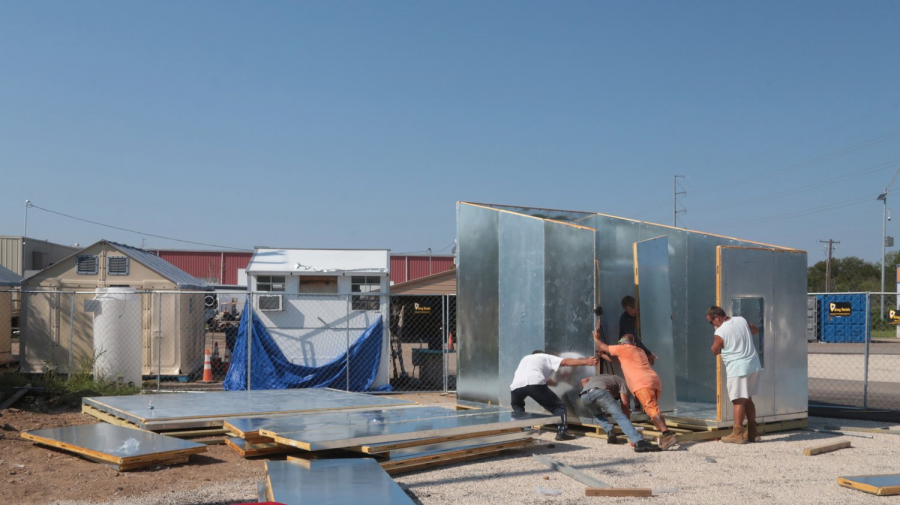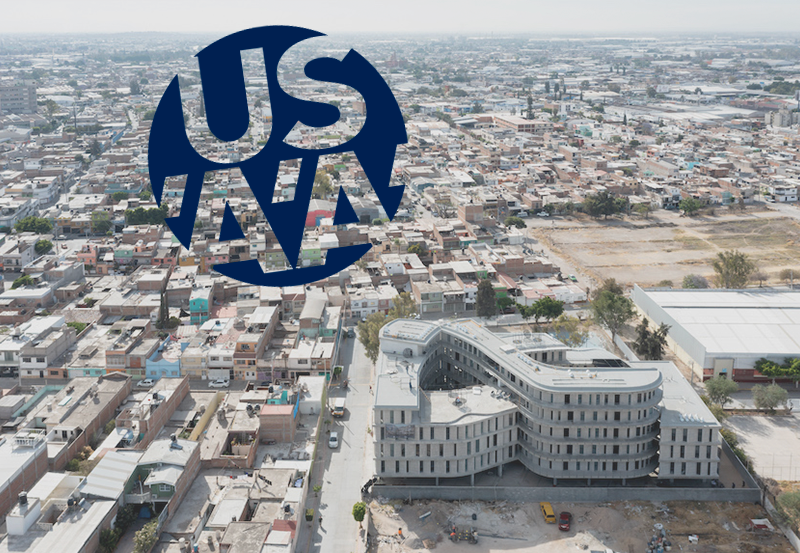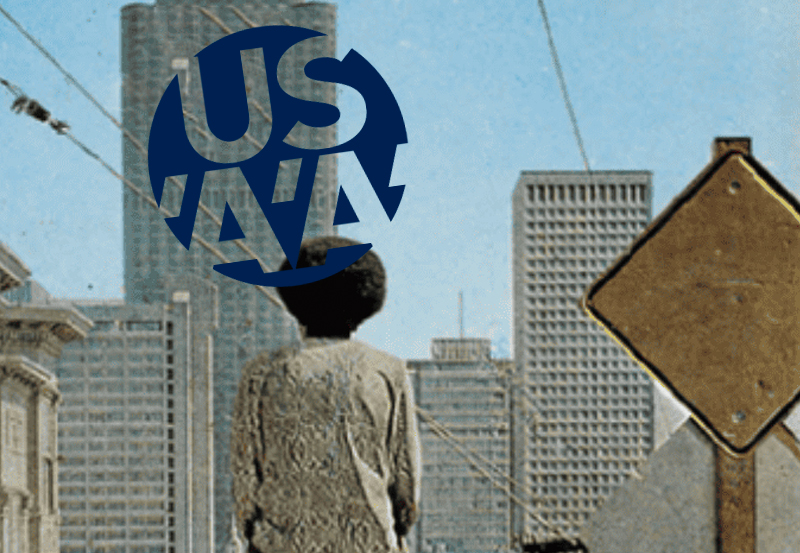Re-election of Donald Trump: James Shen (People’s Architecture Office) and the Lessons of Informality
James Shen is one of the founders and partners of the Chinese-American firm People’s Architecture Office, renowned since 2013 for the development of ‘Plugin Houses’, a modular system designed to reactivate derelict buildings without altering their structure (see the article to be published in the next issue of AA). Since 2018, James Shen is also the co-founder of the PluginHouse Company, a firm developing turnkey built solutions to democratise access to accommodation in a country hit by a major housing crisis. From his office in Los Angeles, the architect reacts to the announcement of Donald Trump’s re-election.
Interview by Clémentine Roland

Esperanza Community, Austin, Texas, 2022
How do you feel about the outcome of this election?
James Shen: I think it extends my feeling ever since Trump’s last presidency. Covid was a big shift: Trump was president when the pandemic started, and I believe the uncertainty that people felt at that time continues to today. We still experience a greater distance between people, a greater polarization… There’s a large shift towards right-wing nationalism and I do think it’s related to the social aftermath of Covid.
What impact could the election of Donald Trump have on your current or future projects?
James Shen: Part of my work is in China. My colleagues and partners are there, and the relationships between the US and China certainly have gotten much worse through Covid itself. Remember, Trump himself had called it the « Chinese virus » – while I found out from a recent trip to China that they blame the US for bringing the virus to the country. It’s one of those situations where it’s too difficult to know what the real facts are – but does it really matter? In the end, it’s a politicization of something that killed so many people – and the facts are that the deaths in the US are some of the highest in the world… And all this happened during Trump’s presidency.
So I think my work in many ways will continue to be challenging and that it is going to be even more important – even though, when a shift like this happens, you feel a bit disconnected. The popular vote going to Trump was not something I expected, and I really blame myself for that, as well as many others of my social status – that is, people living in cities with a higher education. It’s a problem that we’re not aware enough of the issues around us.
How can architects address the divide between the American people?
James Shen: We need to find a way to adapt to a situation that we didn’t expect, to show a certain amount of acceptance in order to connect with a large of the population – Trump voters – that we feel estranged from. I believe this connection can be made through my profession. Our practice, People’s Architecture Office, was founded with the intention of doing work that has a positive impact on people.
There’s also an issue with the way architecture is taught in universities. While theories and concepts are crucial, I believe curriculums lack a balance with practical application. We need more opportunities to confront social issues directly through our work. Through this election, however, you see that there are many social issues that are much more of a priority than others: when you’re concerned about pressing everyday things – the cost of groceries, the difficulty of finding a job, etc. –, you’re not going to be as concerned about ideals. I’m sure many feel that ideals have not led to an improvement in their daily life.
In academia, a lot of the discussions in the last few years and since Covid are about race, social justice, discriminatory practices through how cities have been organized – something we call redlining¹, where you have areas that are split between wealthy and poor neighbourhoods, and where such considerations are built into the planning. There are many things that perhaps a lot of architects feel we don’t have any control over, but I think our role in shaping the built environment has also reinforced a lot of these social constructs by making them « physical ».
Can architecture become a tool for resistance?
James Shen: We’ve really enjoyed and learned from being in parts of the city where there’s a lot of informality, such as our offices’ neighbourhoods in Beijing and in Shenzhen. Informality seems a bit more present in Asia. Our perception of China as an authoritarian country is in fact quite different on the ground: there are people sort of “bending the rules” everywhere, choosing how they use space. It’s nothing criminal: just someone building a little stand to sell juice somewhere previously unthought of, for instance. People are very creative. There’s a lot of energy behind that kind of informal activity, and it creates a vibrant city. There’s a certain amount of acceptance for people challenging the rules because they’re working hard and they’re also improving our environment while trying to make a better life for themselves.
I find that this kind of attitude can offer a lot of ideas as well as serve as an indication of where regulation is lacking: a lot of times, when you find informal construction, it represents a breakdown, a failure in policy; that’s when people start solving problems on their own. And that’s where we, as architects, can say “Hey, maybe there’s a role for us here.”
Could this flexibility towards informal constructions be extended to the United States?
James Shen: It’s less likely to see informality in the U.S. because we are a highly regulated society, especially in terms of our built environment. I believe this has contributed to the US experiencing one of the most significant housing crises globally. We also have an extremely high degree of inequality, much more so than in Europe or in Asia – including China, which has increased quite a lot since the 70s. That inequality is really what this election, I think, is about, and it is related to the people’s livelihood and education.
However, we do see certain forms of ‘informality’, which reveal administrative failures and which sometimes lead to constructive solutions. For example, accessory dwelling units², or backyard homes, are often built informally. In Los Angeles, there was a period where people started building a lot of these in their backyards. They were not permitted, they were not legal, but they just filled entire areas because people needed them. Many of those who had an ADU built were recent immigrants: with relatives coming in and out, multigenerational families in one property, there was not enough room to house people in many of these areas. Now, so much of the ADU policy is more about inspecting constructions, with cities helping people upgrade their living conditions so that they meet code – and therefore legalizing what was originally not legal.
How can architects help the most vulnerable communities cope with the housing crisis?
James Shen: It’s curious that architects often can’t work directly with the people who are actually using their architecture, particularly those from lower social classes. Maybe I could work closely with a client who’s building a large, private home, but it would be hard for many practices to survive working closely with a client who wants a very small house, in a neighborhood that’s going through disinvestment or that is under threat? This is a very difficult part of our work. We are quite constrained from the typical client and consultant business model of architectural practice. This dictates the kinds of projects that we do, and as the world has become much more privatized, government projects are much more rare – and even then, many public projects rely heavily on funding from the private sector. This is a trend towards a type of a practice that is more alienated from the everyday life.
We need to test and try things out, to demonstrate, so that people can visualize, and see, and be aware that there are more possibilities than the ones they typically see. And isn’t that the job of any creative? As architects, we can do so physically, in full scale, in existing locations. There are many ways to “test out” a design, such as taking over an abandoned building or activating an awkward site. On an urban scale, the challenge is rather to bring people together by creating gathering places or planning events that can bring people together. Whether you’re in the rural parts of the US or in cities – and this election is also about this urban/rural divide –, it is crucial to identify places that can connect people across these divisions, to find programmes that enable a co-constructed future. Once again, we have to be more adaptable. We need to find a way to be innovative and inventive with our urban strategies, to have innovative and creative built solutions. It’s difficult to do that without the support of our public authorities, but I think that looking at informal activity can provide crucial insight.
¹ Redlining is the act of « drawing boundaries around neighbourhoods based on residents’ race and depriving them of resources and opportunities, effectively racializing poverty in cities across the U.S.» Environment and Health Data Portal, City of New York, « A Brief History of Redlining ». [Read here: https://a816-dohbesp.nyc.gov/]
² An accessory dwelling unit (ADU) is a « smaller, independent residential dwelling unit located on the same lot as a stand-alone (i.e., detached) single-family home. […] ADUs can be converted portions of existing homes (i.e., internal ADUs), additions to new or existing homes (i.e., attached ADUs), or new stand-alone accessory structures or converted portions of existing stand-alone accessory structures (i.e., detached ADUs). » American Planning Association, « Accessory Dwelling Units ». [Read here: https://www.planning.org/]
In 2021, AA published an issue on the United States, which is still available from our online shop.





